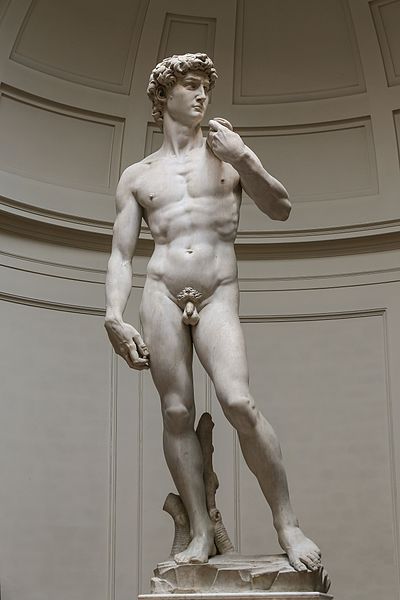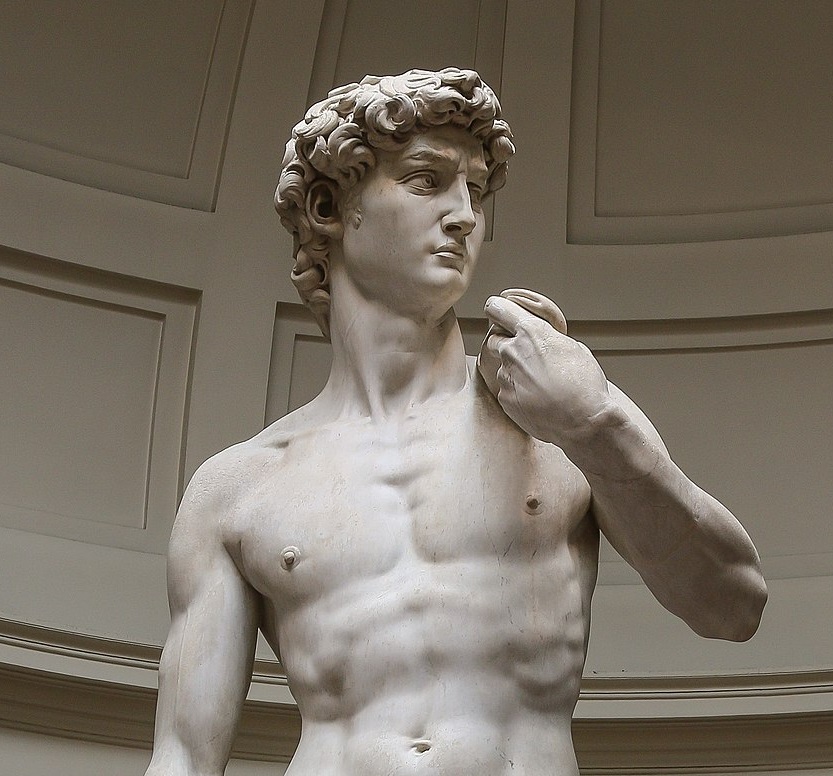
Title: David
Artist: Michelangelo
Date Sculpted: c. 1501 – 8 June 1504
Medium: Marble Sculpture
Period: Renaissance
Dimensions: 517cm x 199cm
Location: Galleria dell’Accademia, Florence
Summary
Michelangelo‘s “David” is one of the most iconic sculptures in the history of art, a masterpiece of Renaissance sculpture created between 1501 and 1504. The work was commissioned by the Opera del Duomo for the Cathedral of Florence and is made from a single block of Carrara marble. Standing at a towering height of 17 feet (5.17 meters), the statue represents the biblical hero David, who is most famous for defeating the giant Goliath with a stone and a sling.
Historical Context and Commission: The “David” was originally intended to be one of a series of statues to be positioned along the roofline of the east end of Florence Cathedral, but due to its size and weight, it was placed in a public square, outside the Palazzo della Signoria, the seat of civic government in Florence. This location imbued the statue with political symbolism, representing the defense of civil liberties embodied in the Republic of Florence.
Artistic Significance: Michelangelo broke away from previous representations of David, which traditionally depicted the hero after his victory, standing triumphant over the head of Goliath. Instead, Michelangelo chose to represent David before the battle, tense and focused. This choice highlights the moment of psychological intensity, capturing David in a contemplative stance, with a sling over his shoulder and the stone in his hand, symbolizing the Florentine Republic’s readiness to defend itself.
The statue is a marvel of anatomical accuracy and realism, showcasing Michelangelo’s mastery of the human form and his deep understanding of human anatomy. “David” is considered a prime example of the Renaissance ideal of the perfect male body, embodying strength, youthful beauty, and heroic vigor. The detailed veins, muscles, and the intense expression on David’s face all contribute to the lifelike quality of the sculpture.
Technical Mastery: Michelangelo’s work on the “David” also demonstrates his exceptional skill in working with marble. He started with a block of marble that had been previously worked on and abandoned by other sculptors, referred to as “the Giant.” Michelangelo transformed this challenging piece of stone into a masterpiece of Renaissance art, a testament to his technical prowess and creative vision.

Legacy: The “David” quickly became a symbol of the power and independence of the Republic of Florence. Today, it stands as a symbol of strength and youthful beauty in the wider context of art history. The original statue was moved to the Galleria dell’Accademia in Florence in 1873 to preserve it from damage, and a replica was placed in the Piazza della Signoria, where it originally stood.
Michelangelo’s “David” remains one of the most admired and studied works of Renaissance art, representing not only the biblical hero but also the artistic genius of Michelangelo and the cultural and political aspirations of Renaissance Florence.